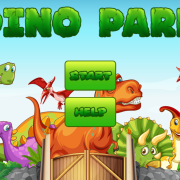Asteroids | Game Online
Unveiling the Mysteries of Asteroids: Celestial Wonders Hidden in our Solar System
In the vast expanse of our cosmic neighborhood, asteroids remain as enigmatic and awe-inspiring figures, silent sentinels that have witnessed the birth and evolution of our solar system. These celestial bodies, often shrouded in myths and legends, are essential pieces of the intricate puzzle that forms our understanding of the universe's origin and existence.
Defining Asteroids: The Rocky Remnants
Asteroids, sometimes referred to as minor planets or planetoids, are small solar system bodies orbiting the Sun. They inhabit the asteroid belt, primarily found between the orbits of Mars and Jupiter. These celestial wonders come in various shapes and sizes, ranging from the size of a grain of sand to the largest one known, Ceres, with a diameter of approximately 950 kilometers.
Asteroids: Key Components of our Solar System
Asteroids play a pivotal role in the development and composition of our solar system. They are primarily composed of silicate rocks, metals, and some even have ices. The asteroid belt is considered a leftover from the formation of the planets; it represents the remnants of material that didn't coalesce into a planet due to Jupiter's powerful gravitational forces.
Asteroids: The Shooting Stars
While asteroids are primarily rocky, some of them contain water and organic materials. When an asteroid enters Earth's atmosphere at high speeds, it creates a meteor or shooting star. The majority of these meteors burn up completely before reaching the surface, but larger ones can cause significant damage if they strike Earth.
Meteors: Stellar Visitors from Afar
Meteors are small particles that enter Earth's atmosphere and burn due to friction with the air, creating the streak of light seen from the ground. Meteor showers occur when Earth passes through a trail of debris left by a comet or asteroid. The annual Perseid and Leonid meteor showers are famous examples of these cosmic displays.
Comets: the Ice Wanderers
Comets, unlike asteroids, contain a significant amount of ice and gas. These celestial bodies have highly elliptical orbits that take them far beyond Earth's neighborhood for most of their existence. When a comet approaches the Sun, heat causes its ices to vaporize, creating a visible trail known as a coma and a tail made up of dust and gas.
The Differences between Asteroids, Meteors, and Comets
Although asteroids, meteors, and comets are all celestial bodies associated with the solar system, they differ significantly in composition, orbit, and behavior. Asteroids are primarily rocky, while comets contain a large amount of ice and gas. Meteors are the results of small particles from space entering Earth's atmosphere at high speeds.
Exploring the Unknown: The Quest for More Knowledge
Scientists continue to study asteroids, meteors, and comets in hopes of understanding more about our solar system and its origins. Missions such as NASA's Dawn spacecraft, which orbited Vesta and Ceres, have provided valuable insights into the makeup and history of these asteroids. Continued research will undoubtedly bring us closer to unraveling the mysteries that surround these celestial wonders.
In a world ever-expanding in knowledge, the study of asteroids serves as a reminder of the universe's grandeur and our place within it. By delving deeper into the secrets hidden among these silent sentinels, we gain a better understanding of ourselves and the cosmic dance that has brought us to where we are today.








